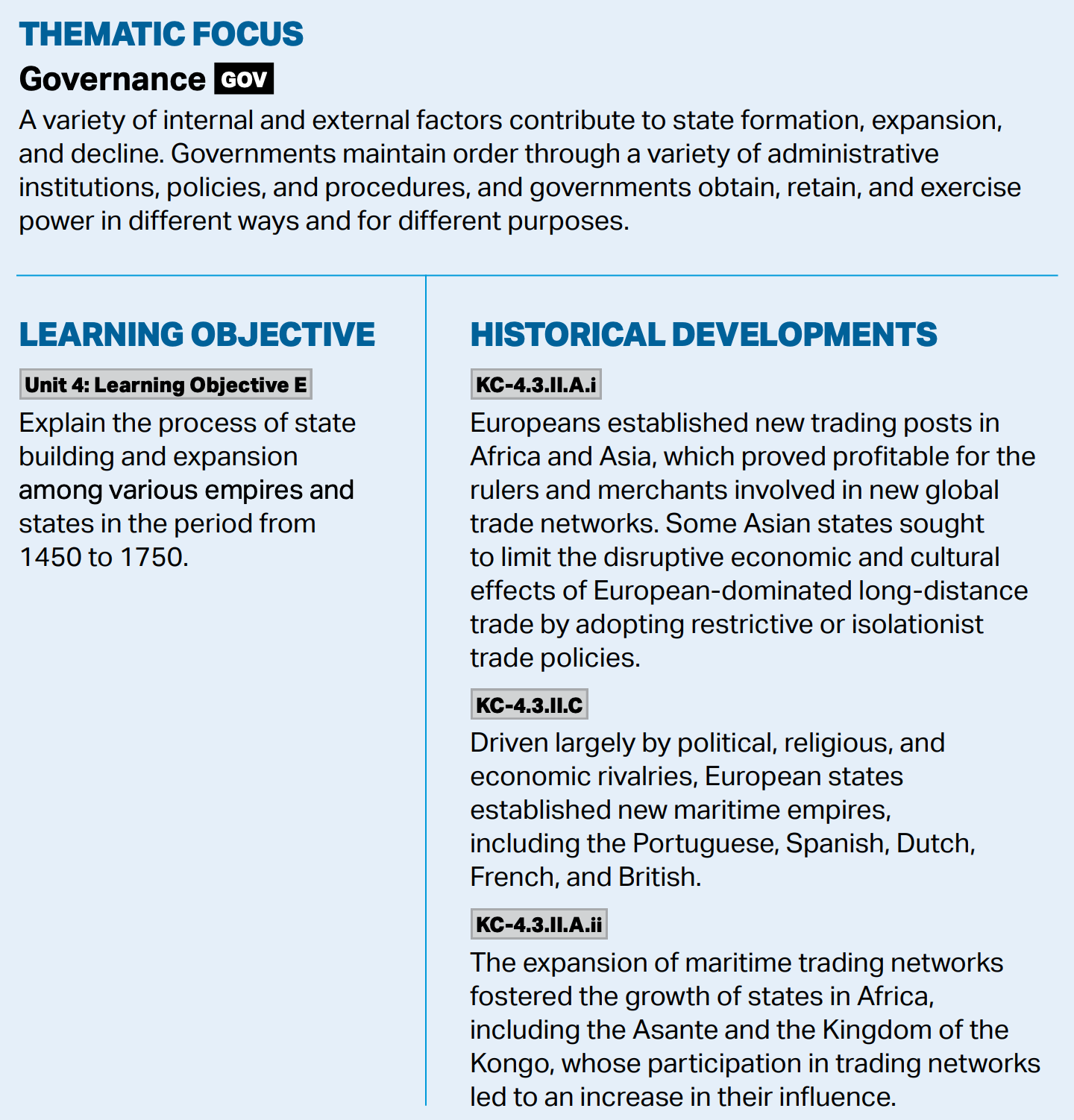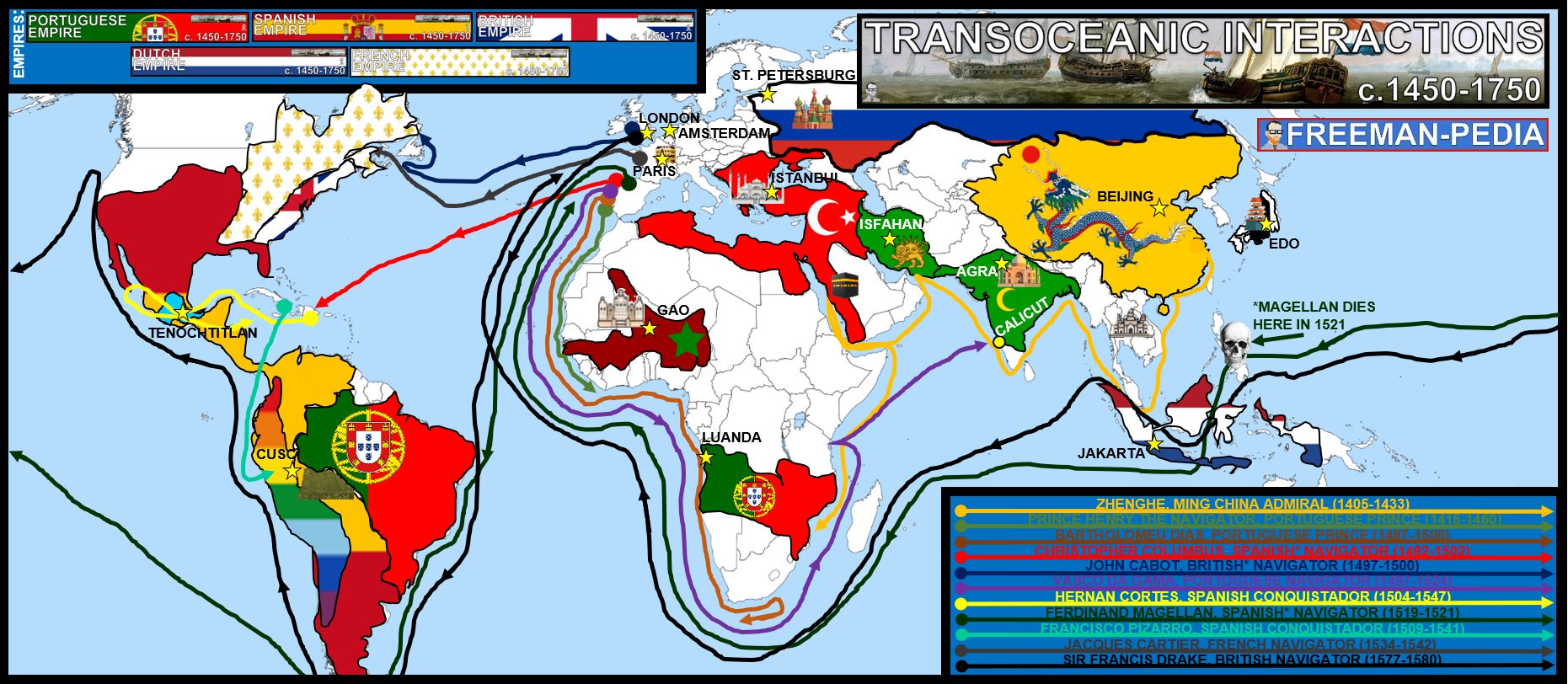The Europeans are here to stay. In some cases, these colonies will last into the late 20th Century. So, how do they set up these empires? You already know who goes where and the initial interactions. But, for this section: focus on how they set up their empires. Below, I’ve made A PAGE FOR EACH EMPIRE so you can see the key people, terms, art, etc. for each of the BIG 5 EMPIRES. These empires were built on a global trading networks. Some Asian states (Japan, and China) saw the writing on the wall and started to limit contacts with the West. Along with all of this trade, brought new labor systems like Chattel slavery and the Encomienda system.
There are FIVE Maritime Empires specifically mentioned by the College Board here. So… Click below to see a page for each:
1. TRADING POST EMPIRES
2. SAKOKU
3. DUTCH LEARNING
4. KONGO
5. ASANTE
6. VICEROY
7. MERCANTILISM
8. ATLANTIC SYSTEM
9. MIDDLE PASSAGE
10. ENCOMIENDA
THE ATLANTIC SLAVE TRADE from CRASH COURSE
THE ATLANTIC SLAVE TRADE from TEDED
MERCANTILISM
MERCHANT CAPITALISM & THE VOC from CRASH COURSE
SPANISH EMPIRE
1. THE NEW LAWS (1542), King Charles V (lobbied by De Las Casas)
2.
3. SECLUSION EDICT of 1635 (1635), Tokugawa Ieyasu
4. AN ACCURATE DESCRIPTION OF THE GUINEAN GOLD-TOOTH AND SLAVE COASTS (1780), William Bosman
5. THE INTERESTING NARRATIVE OF THE LIFE OF OLAUDAH EQUIANO (1789), Olaudah Equiano
1. STOWAGE OF A BRITISH SLAVE SHIP (1788)
2. ENCOMIENDA DIAGRAM
3. DEJIMA NAVAL TRADING CENTER (1863), NAGASAKI, JAPAN
4. ILLUSTRATIONS OF DE LAS CASAS’ WRITINGS
5. SHIPYARD OF THE DUTCH EAST INDIA COMPANY (1726), AMSTERDAM, NETHERLANDS
1. They have the tech. They have the motive. Now, they’re here.
2. Europeans are everywhere (that they know of). These aren’t huge empires… yet (except Spain).
3. They establish new labor systems (Encomienda and Chattel) or exploit existing ones.
4. Some places tried to shut them out (China & Japan)
5. Others, actually prospered from their arrival (Asante, Kongo) while others disappeared (Inca, Aztec).



























